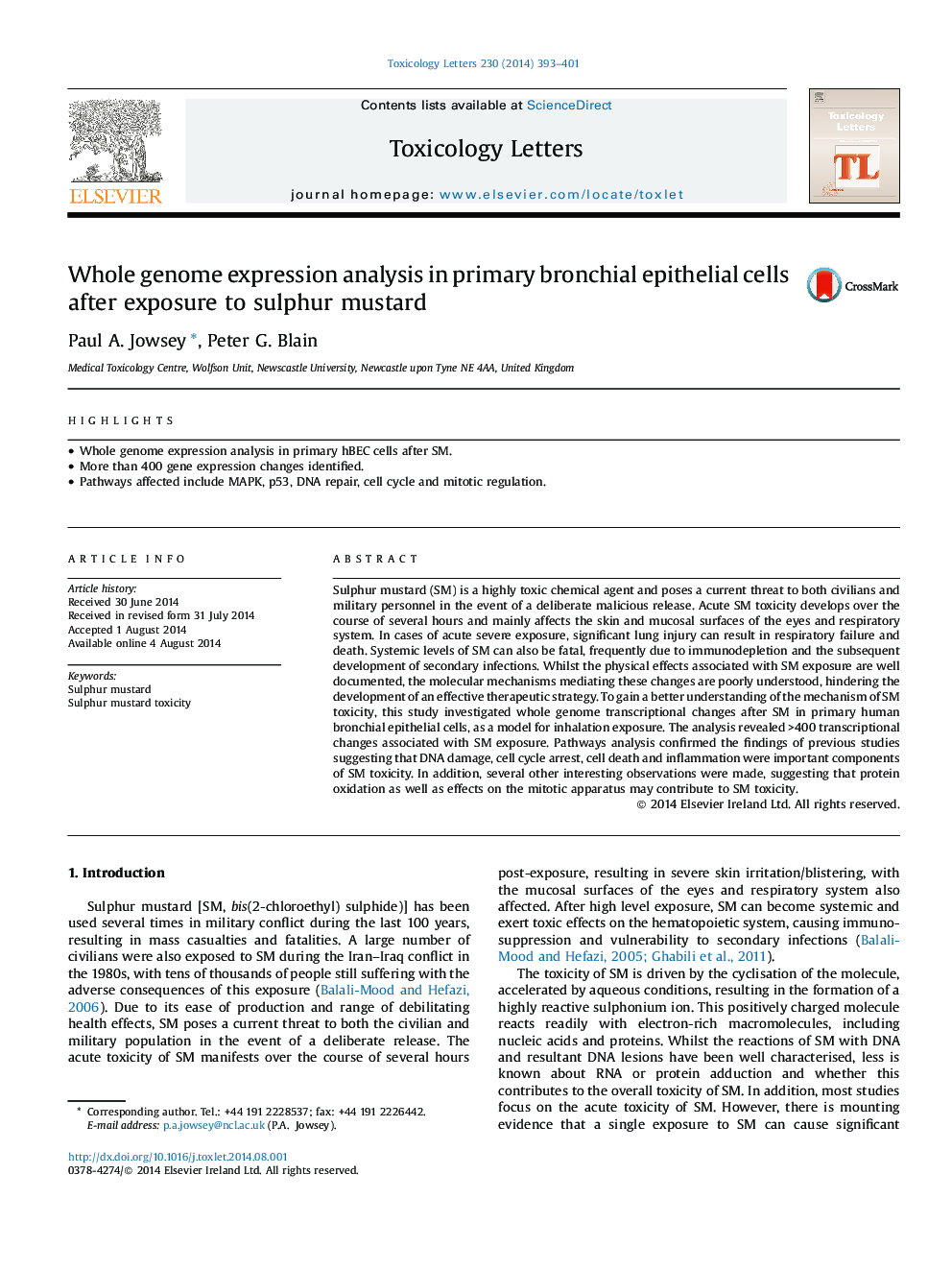| Article ID | Journal | Published Year | Pages | File Type |
|---|---|---|---|---|
| 5859932 | Toxicology Letters | 2014 | 9 Pages |
Abstract
Sulphur mustard (SM) is a highly toxic chemical agent and poses a current threat to both civilians and military personnel in the event of a deliberate malicious release. Acute SM toxicity develops over the course of several hours and mainly affects the skin and mucosal surfaces of the eyes and respiratory system. In cases of acute severe exposure, significant lung injury can result in respiratory failure and death. Systemic levels of SM can also be fatal, frequently due to immunodepletion and the subsequent development of secondary infections. Whilst the physical effects associated with SM exposure are well documented, the molecular mechanisms mediating these changes are poorly understood, hindering the development of an effective therapeutic strategy. To gain a better understanding of the mechanism of SM toxicity, this study investigated whole genome transcriptional changes after SM in primary human bronchial epithelial cells, as a model for inhalation exposure. The analysis revealed >400 transcriptional changes associated with SM exposure. Pathways analysis confirmed the findings of previous studies suggesting that DNA damage, cell cycle arrest, cell death and inflammation were important components of SM toxicity. In addition, several other interesting observations were made, suggesting that protein oxidation as well as effects on the mitotic apparatus may contribute to SM toxicity.
Keywords
Related Topics
Life Sciences
Environmental Science
Health, Toxicology and Mutagenesis
Authors
Paul A. Jowsey, Peter G. Blain,
